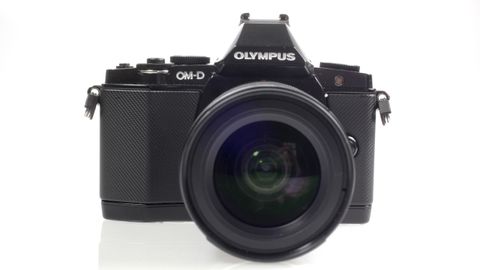TechRadar Verdict
Pros
- +
Excellent viewfinder
- +
Tilting touchscreen
- +
Customisable dials and buttons
- +
High image quality at low ISOs
- +
New art filters
Cons
- -
Plastic unresponsive buttons
- -
No in-built flash
- -
Odd (sound) emitted
Why you can trust TechRadar
Three years after making its first entrance into the compact system camera arena with the PEN E-P1, Olympus has gone back to its roots again to produce the OM-D E-M5, with its retro styling owed to its analogue predecessor.
Inside the camera are an all new 16 million pixel Live MOS Four Thirds sensor and TruePic VI image processor, which Olympus says is designed to give better low light performance and higher dynamic range than previous Micro Four Thirds cameras in its line-up.
As a step-up from the PEN range, this camera is designed to appeal to advanced enthusiasts, however Olympus is keen to point out that the camera isn't necessarily intended for use by pros, which it still believes will be drawn in by the company's range of DSLRs.
That said, there are a large number of impressive specs crammed into the OM-D's diminutive body. A new image stabilisation system uses a 5 axis system which combats bodyshake for vertical, horizontal, pitch, rolling and yaw.

Along with its Micro Four Thirds cohort, Panasonic, Olympus is keen to emphasis the benefits of using the smaller sensor, including edge to edge sharpness.
That retro body has been designed with serious photographers in mind, with the magnesium alloy being dust and splash proof, featuring the same all weather proofing as its top of the range DSLR, the E-5.
This dust and splash proofing has also been carried over to a number of accessories compatible with the OM-D, including the detachable flash which is bundled with the camera, as well as the new 12-50mm zoom lenses and the new battery grip.
As the camera is pitched at higher end users, a new higher price tag has also been attached. At £1000 for the body only, the camera certainly isn't cheap, but it's likely to be pitched against other high-end cameras such as the Fujifilm X Pro1 and Sony NEX-7, which fall into similar, if not more expensive, price brackets.
Amy has been writing about cameras, photography and associated tech since 2009. Amy was once part of the photography testing team for Future Publishing working across TechRadar, Digital Camera, PhotoPlus, N Photo and Photography Week. For her photography, she has won awards and has been exhibited. She often partakes in unusual projects - including one intense year where she used a different camera every single day. Amy is currently the Features Editor at Amateur Photographer magazine, and in her increasingly little spare time works across a number of high-profile publications including Wired, Stuff, Digital Camera World, Expert Reviews, and just a little off-tangent, PetsRadar.


